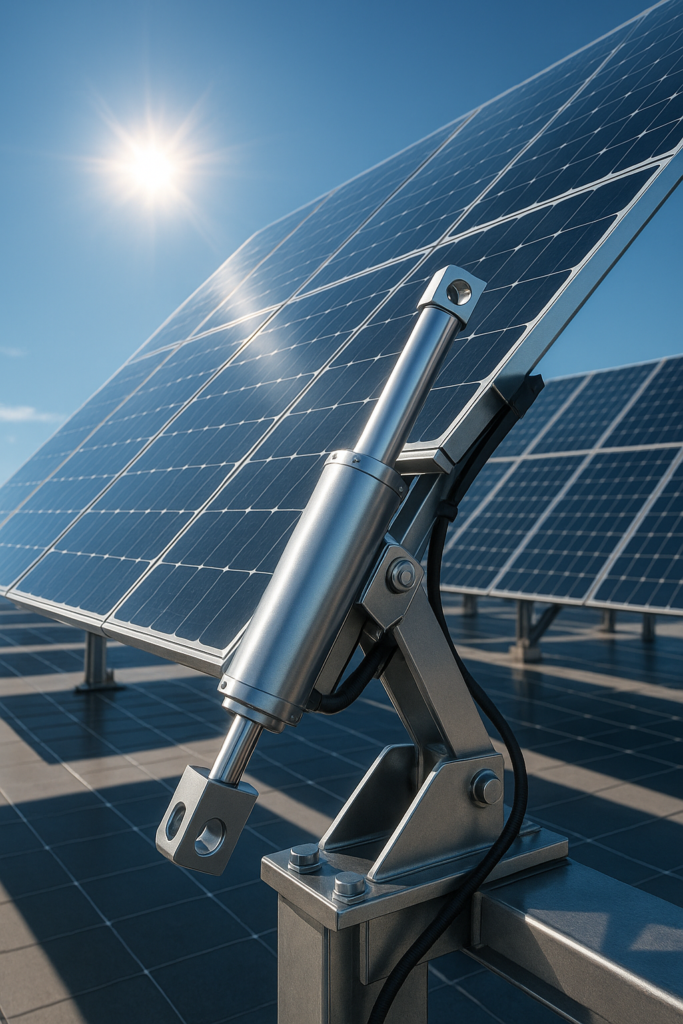Every morning, as the first light touches the horizon, solar panels across the world begin their silent work. But there was a time when these panels stood still, fixed in one direction, waiting for the sun to come to them. They did their best, but they couldn’t turn or follow the sun’s movement. As the day progressed, their efficiency dropped, and large portions of sunlight were simply lost, Solar Tracking.
This is the story of how electric linear actuators changed everything.

The Problem of Stillness
A farmer once installed a solar plant on his land. It worked well in the morning when the sun was directly in front of the panels. But by noon, the angle wasn’t right anymore. By evening, the panels captured only half the energy they could have collected.
He wondered if there was a way to make the panels move like sunflowers — always facing the sun.
He discovered the answer in a simple yet powerful machine: the electric linear actuator.
The Arrival of the Actuator
Imagine a device that quietly extends and retracts, moving with precision, without any oil or heavy maintenance. That is exactly what an electric linear actuator does.
When the farmer added an actuator to his panel system, something magical happened.
The panels began to tilt and turn gently throughout the day. From dawn until sunset, they followed the sun’s path in the sky. Instead of waiting for sunlight, they actively chased it.
The result was immediate. Electricity generation increased. Batteries charged faster. And the entire solar setup felt more alive, more intelligent.
Why the Actuator Became the Hero
The farmer soon realized why the actuator was the perfect fit.
The movements were accurate, allowing the panels to align perfectly with the sun’s rays. The system worked smoothly even during hot summers, dusty winds, and heavy rains. There was no oil leakage, no messy repairs, and no complicated mechanism.
The actuator quietly did its job every single day, consuming power only when adjusting the panel. It demanded almost nothing but delivered more energy than ever before.
Single Axis or Dual Axis – The Actuator Handles Both
In some fields, the panels need only to tilt from East to West. In others, they need to move up, down, left, and right to catch the sun during every season. The electric linear actuator could handle both situations.
With the help of sensors or simple automation controllers, the panels kept finding the right angle on their own.
The entire system had become smarter — almost like it was thinking.
The Transformation
Months passed, and the farmer looked back at his electricity records.
There was a significant jump in energy output — sometimes even 40% more than before. His payback period reduced. His system felt reliable. And he no longer worried about breakdowns, because the actuator was built to survive harsh conditions.
His solar plant was no longer just a setup. It had become a smart, responsive system that worked hand-in-hand with nature.
A New Era of Solar Tracking
Today, from large solar farms to rooftop installations, many systems are adopting electric linear actuators. They provide the movements, the precision, and the reliability needed to chase the sun all day long.
As technology grows, actuators are becoming stronger, more weatherproof, and more intelligent — shaping the future of renewable energy.
This story is still being written, and every day, with every sunrise, electric linear actuators continue to guide solar panels toward maximum energy and a brighter, cleaner tomorrow.
